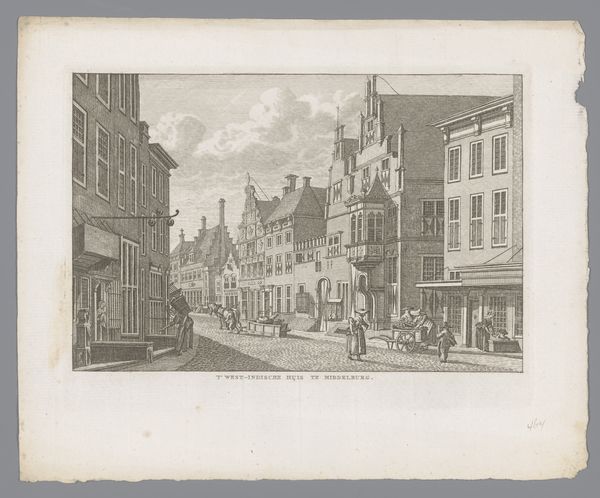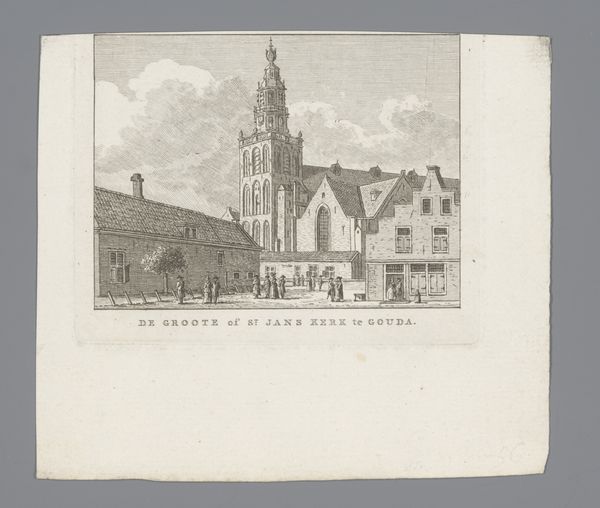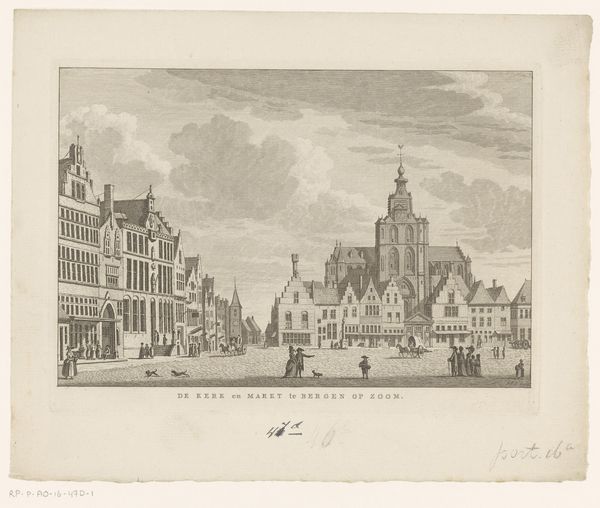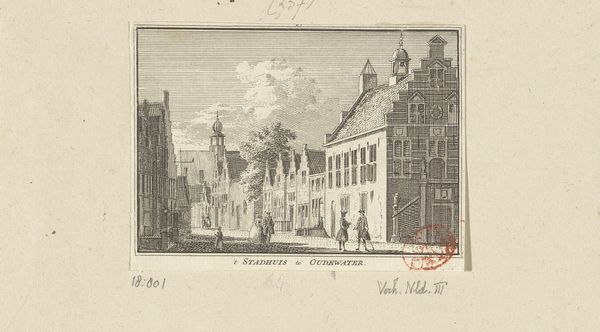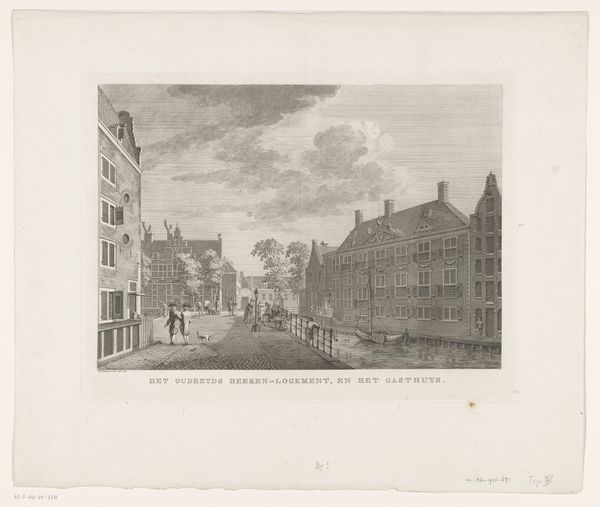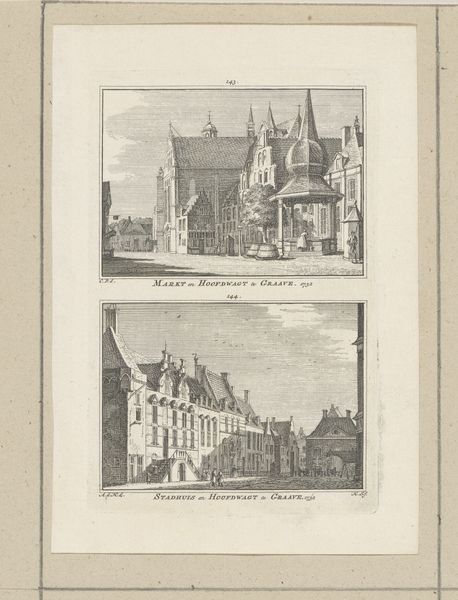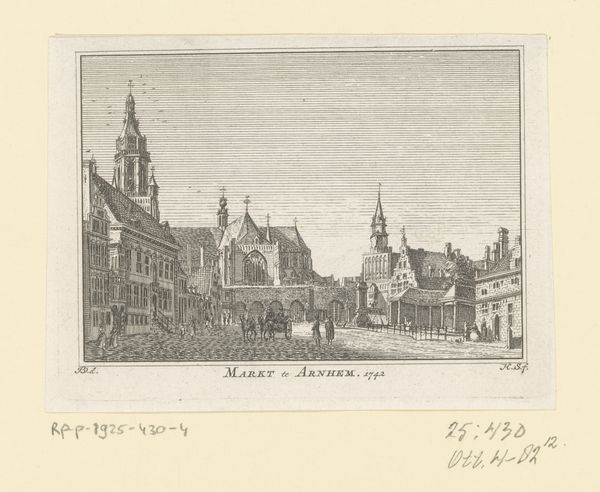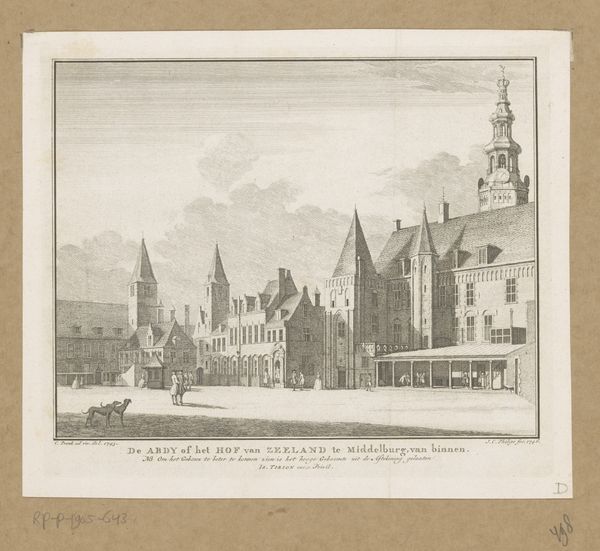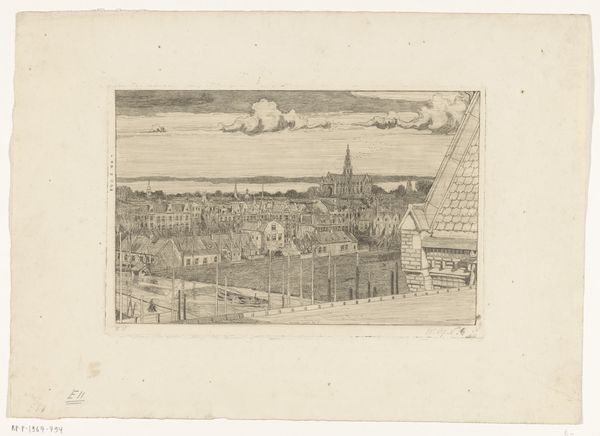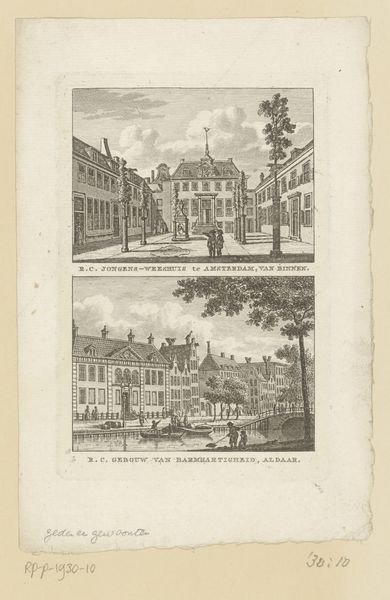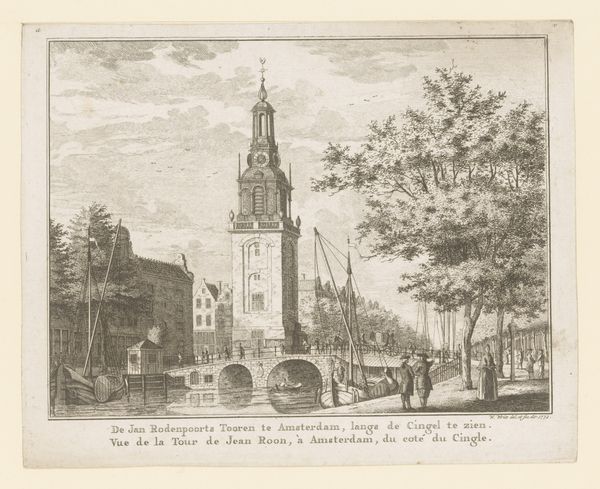
Gezicht op de Grote Markt en het Stadhuis van 's-Hertogenbosch 1746
0:00
0:00
hendrikspilman
Rijksmuseum
print, engraving
#
baroque
# print
#
cityscape
#
engraving
Dimensions: height 97 mm, width 123 mm
Copyright: Rijks Museum: Open Domain
Curator: Let's delve into this 1746 engraving by Hendrik Spilman. It’s titled "Gezicht op de Grote Markt en het Stadhuis van 's-Hertogenbosch," or "View of the Main Square and Town Hall of 's-Hertogenbosch," and currently resides here at the Rijksmuseum. What's your immediate take? Editor: Well, the first thing that strikes me is how... orderly it all looks! There’s a delicate, almost dreamy quality to the lines, a real sense of quiet amidst what I imagine must have been a bustling marketplace. Like looking into a snow globe of the past, you know? Curator: Exactly. Spilman was working within a Baroque aesthetic, where clarity and order were paramount. But consider the social and economic realities such cityscapes often mask. Who is truly represented here, and whose labor built this "order"? Cityscapes of this era tended to reflect power structures, suppressing voices outside of the aristocratic norm. Editor: Ooh, hadn’t thought of that, though that fits somehow, that repressed feeling that’s lurking beneath the surface. And it is beautifully done. Look at how Spilman captured the light hitting the Stadhuis—it's subtle, isn’t it, how he creates depth with just lines? You can almost hear the clip-clop of horses on the cobblestones. Makes you wonder what dramas unfolded right where that tiny horse cart is parked. Curator: His technique certainly adds to the allure, doesn't it? The precision of the engraving allows for incredible detail—each brick, each window pane, precisely rendered. It’s this detail that makes it valuable for understanding the urban planning and architectural styles of the period. We can look at this to see class division and architectural choices rendered with an almost obsessive exactness. Editor: True, but beyond the meticulousness, there’s a story being whispered too. Maybe it’s the sky; that kind of wispy suggestion of clouds feels surprisingly modern. Or the placement of the figures, almost frozen in time… Is that two ladies shopping at the left? So many little possibilities… What are your final thoughts? Curator: It’s a potent reminder that even seemingly objective depictions carry inherent biases. Spilman’s print serves as a valuable artifact of architectural history and a window into how the elite wanted their world represented, carefully designed and curated to tell a particular story. Editor: I think you put it perfectly. Me, I just want to climb right in there and buy a cake from the marketplace… then maybe overturn a cart or two and mess with their narrative! Thanks, that was brilliant.
Comments
No comments
Be the first to comment and join the conversation on the ultimate creative platform.
